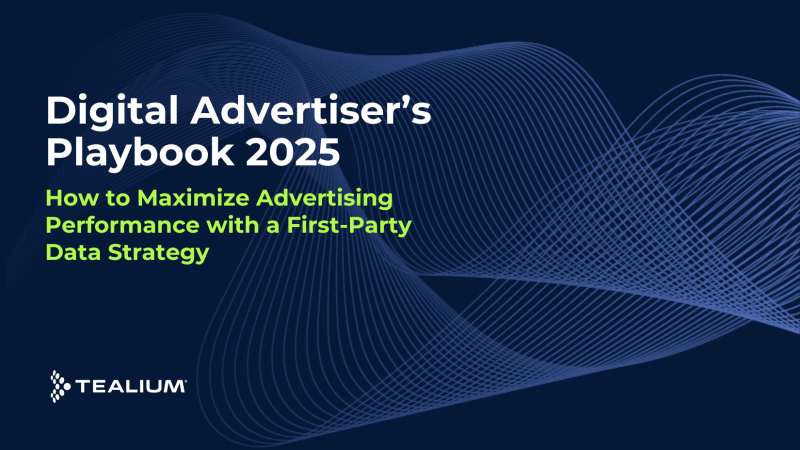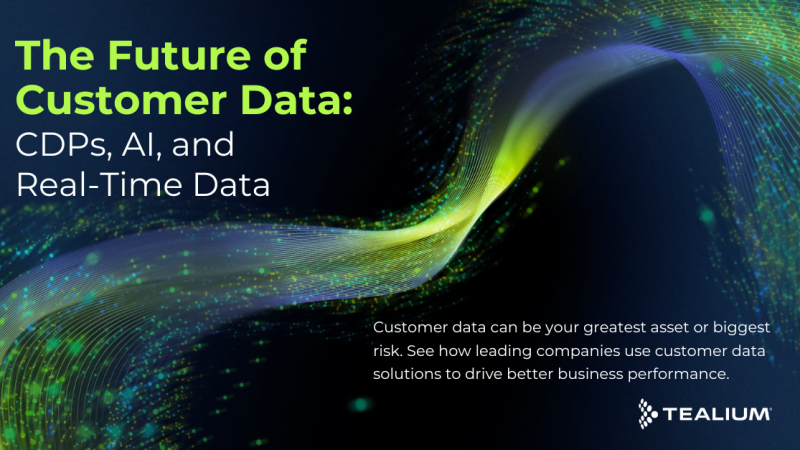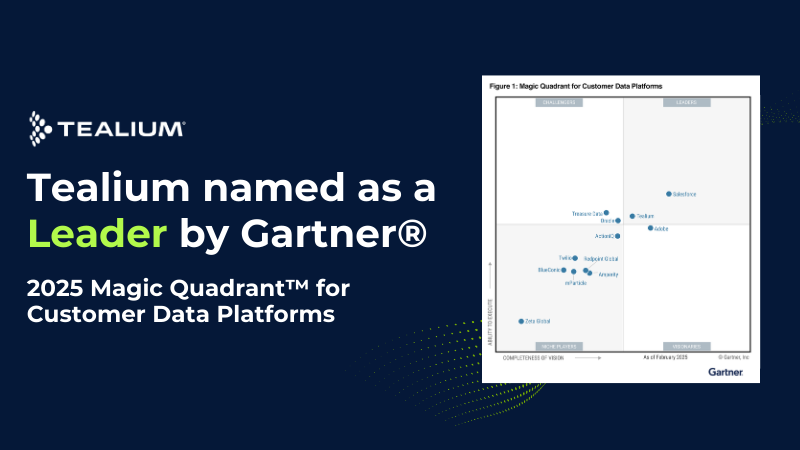With changing global data privacy regulations, burgeoning customer expectations on how data is handled, and continual advancements in technology, now, more than ever, where you get your data matters. That’s why understanding the difference between the different types of data — zero, first, second, and third party— is critical to plotting out the right strategy to keep your data secure and your customers happy. While first and third-party data are the most commonly discussed, it’s also important to understand the value and benefits of zero and second-party data.
While third-party data has comprised the majority of the data that marketers and analysts work with (because it was easy and readily available), the evolution of data privacy regulations and the rigors of crafting personalized customer experiences are elevating the need for first-party data.
What Is Zero-Party Data?
Zero-party data is data given to your customers through a survey, poll, or similar means. To learn more about zero-party data, read our ebook, Unlocking Zero-Party Data.
How Is Zero-Party Data Used?
Zero-party data is used by companies since they need more permission to engage in personalization for their customers. Having your customers share data with your company amplifies the value of the first-party data provided (if it’s accurate).
Is Zero-Party Data Collected With Consent?
Yes, zero-party data is collected with consent.
What Are Examples of Zero-Party Data?
Examples of zero-party data include personal information, potentially sensitive data (for example, political opinions), intentional behaviors, and preferences.
What Is First-Party Data?
First-party data is data your company gathers from consumers interacting directly with your brand. First-party data helps your brand enrich the data you’ve already collected.
How Is First-Party Data Used?
With first-party data, you can analyze how consumers interact with your brand to improve your customer experience and deliver better engagement both holistically, and at the individual level.
Is First-Party Collected With Consent?
First-party data may be collected with consent, but it is subject to local regulations. For more information, see our blog, The Scoop on Data Privacy Regulations.
What Are Examples of First-Party Data?
Examples of first-party data include behaviors or actions a user takes on your website, app, product page, email, or SMS interactions. Another example of first-party data is purchase history.
What Is Second-Party Data?
Second-party data is a type of data that is shared with trusted partners. Depending on your region’s regulations, second-party data may be “sold” data and is subject to local data laws.
How Is Second-Party Data Used?
If you work with trusted partners, you may use second-party data to extend your audiences and create synergistic experiences. Trade shows or webinars are two examples of how to accomplish this.
Is Second-Party Collected With Consent?
Yes, second-party data is collected with consent.
What Are Examples of Second-Party Data?
Examples of second-party data include behaviors or actions from another company’s website, app, product page, purchase history, email, or SMS campaign.
What Is Third-Party Data?
Third-party data is data that is collected by an organization that doesn’t have any direct link to the customer. Usually, this data is collected by data aggregators for the express purpose of selling it to other companies.
How Is Third-Party Data Used?
Third-party data is generally used to clean up your data or to enrich your data, so you can have a larger quantity of high-quality insights to improve your campaigns. However, this type of data may cost you customer trust if it is used improperly.
Is Third-Party Collected With Consent?
Third-party data may be collected with consent, but that depends on the data provided.
What Are Examples of Third-Party Data?
Examples of third-party data include public demographics and behaviors.
Understanding the Different Data Types
This table provides an overview of the different data types, how they are used, and examples of each.
| Zero Party Data | First Party Data | Second Party Data | Third Party Data | |
|---|---|---|---|---|
| What is it? | Data customers give to your company through a survey, poll, or similar means | Data your company gathers from consumers interacting directly with your brand that helps enrich the data you’ve collected. | Second-party data is shared with trusted partners. Depending on the regulation, second-party data may be considered “sold” data and subject to regulations. | Data collected by an organization that doesn’t have any direct link to the customer. Usually, the data is collected by data aggregators for the express purpose of selling it to other companies. |
| How used? | Companies need more permission to engage in personalization. Having your customers share data with you amplifies the value of your first-party data provided it’s accurate. | With first-party data, you can analyze how consumers interact with your brand to improve the experience and deliver better engagement holistically and individually. | If you work with trusted partners, it may make sense to extend your audiences and create synergistic experiences. Trade shows and webinars are two ways to accomplish this. | Generally used to clean up your data or enrich your data so you have better/more insights to improve your campaigns. It may cost you more than what you pay upfront. |
| Collected with consent? | Yes | It Depends (Subject to local regulations) | Yes | Unknown – Depends on data provider |
| Examples | Personal information Potentially sensitive data (e.g., political opinions) Intentional behaviors Preferences |
Behaviors or actions from your website, app, product Email or SMS interactions Purchase history |
Behaviors or actions from another company’s website, app, product Email or SMS interactions Purchase history |
Demographics Behavioral Contextual |
Market Forces Impacting Customer Data
Let’s first take a look at the market forces driving the use and availability of different data types
Zero Party Data, though limited, is still important.
Zero party data is very straightforward. Since consumers are sharing this data intentionally and with consent, there is less concern about violating consumer data protections and establishes trust between a consumer and a business. The critical element of zero party data is that it contains data a consumer has voluntarily provided versus cookies which contain consumer data not necessarily provided with consent. This makes the data valuable to marketers and since it’s given voluntarily, zero party data is more likely to be accurate. The downside is the data is limited – often just names and email addresses. The upside is that zero party data is highly trusted and creates the most accurate personalized customer experiences.
First Party Data is most important.
With the looming demise of third party cookies, businesses need to get comfortable relying on first party data to drive their marketing and customer experience strategies. First party data gives you insight into how consumers are interacting with your brand and can therefore be used to enrich customer profiles and build audiences. First party data is considered the most important data type since it objectively shows customer interactions with your brand and is collected through customer consent, be it through engagement with your website, mobile applications, social media profiles, purchase transactions, or any other event when a customer directly interacts with your organization.
Second Party Data is gaining importance and traction.
With the deprecation of third party cookies, second party data is growing in importance as well. Second party data is shared between companies that have a trusted partnership with one another. Second party data is more useful than third party data because it is less risky. And since it is shared between trusted partners, it’s easier to audit the lineage of the data.
Third Party Data is quickly becoming second class.
Third party data is less than ideal to meet the twin demands of stringent data privacy regulations and consumer expectations of a highly personalized and trusted customer experience. It can be risky and error prone, and for companies that rely on it, that data will be harder to come by and work with in the future as Google and other web browsers are sunsetting their support of third party cookies. The CCPA defines the structure and handling of third party data to ensure that it is anonymous and never “de-aggregated,” making it more arduous and expensive to manage.
The Benefits of a First Party Data Strategy
Switching to a first party data strategy isn’t swapping out one set of data for another. It’s complementing your existing approach with richer and more strategically-aligned data that maps to your organization’s revenue goals. Building a first party data strategy requires a robust yet adaptable customer data supply chain to move from collection to unification to activation.
Turning to a first party data strategy unlocks a host of use cases that can help you unlock long-promised business goals like digital transformation.
Benefit 1: Scalable Customer Acquisition
Collecting first party data is the first step— an email address or behavioral data— but getting them to become customers is another hurdle. As consumers bounce between touchpoints, companies need to be able to react across channels in real-time. By integrating all of your data sources into a vendor-neutral customer data supply chain, you’re better able to analyze and engage individual users’ actions.
Benefit 2: Real-Time Insights and Activation
First party data is great, but there is so much data in so many places that generating high-quality insights can be slow and laborious without the right strategy in place. With a real-time, vendor-neutral customer data supply chain, you can reduce the time-to-insights needed to generate revenue. If you can identify and engage consumers from the first moment instead of seven days later, then you’ve got a much better shot at striking while the proverbial iron is hot.
Benefit 3: Govern Data Use According to Customer Consent
One of the inherent challenges of third party data is managing the complexity of consent and various overlapping regulations. The same goes for first-party data, though you’ve cut out the middleman (which is very helpful). When consent is captured on your website (via those ever-present banners), the opt-ins and opt-outs must be tied to a profile and acted upon. Because there are a variety of things to opt-in or opt-out of, managing what data needs to be shut down and what data can continue to be collected gets tricky. With a Customer Data Platform (CDP) linking consent data to the customer profile (which is tied to all of your data sources) the labor involved with complying with regulatory privacy legislation is drastically reduced, making data auditing and traceability scalable.
How Tealium Helps You Wrangle All of Your Data
Tealium helps you maximize your data collection needs through our products Tealium iQ and EventStream. Together they form the Event Data Framework that is the basis for the larger data collection strategy. When used together, the Event Data Framework will automate consent acquisition and the modern server-side data collection and distribution techniques needed to preserve data fidelity that the loss of third party cookies and browser restrictions resulted in.
We Work With All yYur Data Sources – In Real-Time
- Client-side (tag-based) and server-side (API-based) data collection in a single platform for richer customer data
- True real-time (we are talking milliseconds) collection, standardization and delivery
- With Tealium’s flexible architecture you can mitigate risk and reliance on third party data by building a first party data foundation
Data Accuracy and Quality
- Filter and monitor event data streams in real time
- Augment and monitor data quality as data flows into the system
- Configurable deterministic identity resolution
1,300+ Turnkey Integrations
- End-to-end customer data collection and activation
- Marketer-friendly, no-code integration workflow
- 1300+ integration marketplace including deep server-side integrations with the world’s largest media partners like Facebook
Privacy and Security
- Governance & Automation – Tealium’s data collection technologies collect the consumer datasets alongside their privacy preferences, in real time, on any type of devices.
Consent Management – Easily collect and enforce privacy preferences with Tealium’s built-in consent and privacy manager or integrations with your preferred consent management platform.







